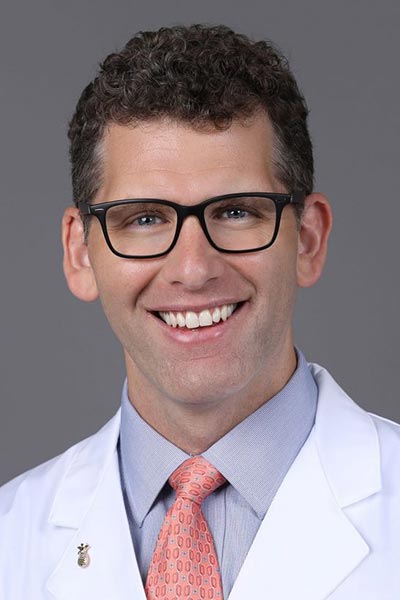When a patient is also an athlete, chest medicine specialists must consider their intense level of activity and how it impacts their health care—from diagnosis to treatment to recovery. In athletes, symptoms may not be what they initially appear, and rehabilitation may look different. Athletes may need special instructions regarding when and how to return to exercise after a health issue.

Eli Friedman, MD, Medical Director of Sports Cardiology at Miami Cardiac and Vascular Institute, said humility and patience are two of the hardest “therapies” for athletic patients to accept.
“Athletes want to push themselves,” Dr. Friedman said. “Athletes tend to think that if they don’t train hard on a given day, they’re going to lose their fitness. They often believe the adage, ‘use it or lose it.’ That’s just not the case.”
Whether they’re experiencing or recovering from a respiratory illness or undergoing rehab following thoracic surgery or a cardiac event, athletes need personalized care to ensure they don’t push themselves too far, too fast.
The first step to personalized care for athletes is determining which patients are athletes, Dr. Friedman said.
“My definition of an athlete is anyone for whom exercise is a way of life and they want to continue to do it—not only to maintain their health but also because it is really important to them,” he said. “When we talk about special considerations for athletes, we’re not talking about someone who casually walks on a treadmill four or five times a week while watching Netflix or having a chat. However, when you see a patient who is running a couple marathons a year, that person is absolutely an athlete.”
Making this distinction requires a thorough history, which means asking more than how much physical activity a patient gets each week. As a sports medicine specialist, Dr. Friedman uses an athletic history, which can be useful to any clinician when they see someone who is exercising at a high level most days of the week.
“We specifically ask about the activities they do and the frequency and duration of those activities,” Dr. Friedman said. “We also want to know what activities they’ve done previously and what they want to do in the future. And, of course, we ask about symptoms they may be experiencing.”
Additionally, he said a thorough history helps clinicians to understand a patient’s health care journey and, for athletes, how their health may impact their ability to exercise.
With the history complete, clinicians must then draw on a wide range of medical knowledge to determine a course of action. When an athletic patient presents with pulmonary or cardiovascular concerns, Dr. Friedman said, it is important to consider the role the patient’s high level of activity may be playing in their health.
“I regularly see young women—in their teens and 20s to 30s and 40s—who are exercising vigorously and come in with complaints of chest pain, shortness of breath, fatigue, and exercise intolerance,” he said. “And yet, all cardiac workups are normal. Knowing their activity level points us to relative energy deficiency syndrome.”
This highlights the importance of being aware that a variety of concerns for athletes—nutrition, sleep, hydration, etc—are critical to consider alongside their medical complaints or conditions. Because of their athleticism, symptoms of medical conditions may be more subtle. Multidisciplinary care becomes even more important when treating athletes, Dr. Friedman said.
Conversely, athletes with certain conditions—from respiratory viruses to cardiovascular disease—need personalized treatment to help them get back to optimal health.
Indeed, a 2024 study found a greater number of symptoms reported during acute SARS-CoV-2 infection was associated with higher perceived exertion among athletes up to 28 days following the infection. Investigators recommended measuring perceived exertion to assess disease severity and guiding athletes returning to their sports.
“COVID reminded us of the dangers of returning to activity too quickly,” Dr. Friedman said. “You have to be careful and respect these viral illnesses because there could be subclinical myocardial inflammation, which can be quite dangerous. This is rare, but it is possible.”
Athletes must be clearly counseled to listen to their body when they’re sick, Dr. Friedman said.
“When a patient has respiratory symptoms, fever, [or] congestion, that is not the time to push,” he said. “Even in the days after an illness, athletes need to take time to recover. You only get one chance to recover.”
The same is true for patients recovering from cardiac events or thoracic procedures. For athletes, individualized rehabilitation plans are key to ensure they get back to doing what they love.
“Rehabilitation should never be underestimated and should be a part of every athlete’s treatment plan,” Dr. Friedman said.
